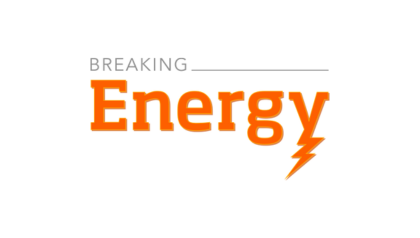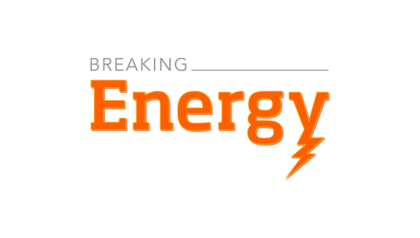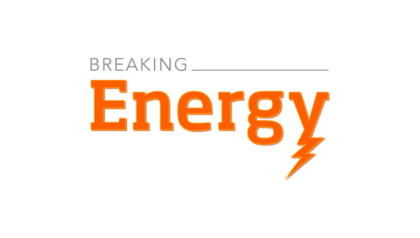The launch of President Obama’s Power Africa campaign in mid-2013 pushed major generation projects back to the forefront of electricity planning in Africa, signalling for some a return to the era of the dramatic gesture, the big solution to a big problem. But, while this and other similar projects grab the headlines, CITAC argues that a more effective initial approach to boost electrification and supply in West Africa would entail the far more prosaic combination of improvements to plant efficiency, maintenance and fuel supply, a reduction in transmission losses, and, above all, the establishment of strong and transparent regulatory structures.
Only 30% of Sub-Saharan Africans have access to electricity, far lower than other major regions in the world – in India, for example, the electrification rate is around 65%. Planned and unplanned black-outs are a familiar feature of everyday life for millions of people and those without back-up systems have no choice but to wait for the lights to come back on.
With total installed capacity of only 16 GW at the end of 2012 for its estimated 300 million inhabitants, and that capacity only operating at an average utilisation rate of 36%, rolling and unintentional black-outs are a common occurrence in West Africa, despite its modest average electrification rate of around 31%. To put these figures into perspective, in 2011 electricity production in Nigeria, which accounts for some 10 GW of the region’s total capacity figure, amounted to less than half the consumption of Greater London.
To compound the situation, there is a sharp divide between the better performing West African economies such as Ghana, Cote d’Ivoire and Nigeria ‑ where electrification rates range from 50% to 60% ‑ and those such as Mali, Sierra Leone, Liberia and Guinea, which stretch only to 15%-20% penetration. But at least the region fares better than East Africa, which counts countries with electrification rates as low as 6%, such as Uganda.
Gloomy headlines hide strong production growth
Despite the headline figures, West Africa’s power situation has improved noticeably in recent years. Power production, for example, has risen by roughly 8% per year (to 52 TWh), far above the Sub-Saharan average. And critically, it has gained a new political urgency with economic expansion in the region.
The common challenge for the 13 countries in the West African Power Pool (WAPP) is thus to boost the supply of power, for a raft of political and security reasons, in addition to the more obvious societal and economic advantages that widening access to power will bring. Power supply is clearly a number one priority.
Key electricity indicators
Assessing the scale of the capacity needed to supply short- and medium-term demand is a more complicated task, however. The traditional modelling approach is to apply an ‘electricity coefficient’ ‑ based on a simple division of annual percentage growth in power demand by the percentage change in GDP ‑ to projected GDP growth. This indicates the increase in power supply that is necessary to meet that level of economic expansion.
Capacity needs?
WAPP’s electricity coefficient has averaged about 0.8 since 2000, although it has risen to around 1.2 since 2010, in line with the increase to 8% in annual power supply growth. Demand growth is expected to rise again through this decade, to around 10% p.a., which would give a coefficient of 1.5. Although it is impossible to calculate capacity requirements precisely from the coefficient, it indicates baseline requirements of roughly 15 GW of additional capacity by 2020. Clearly, desired electrification rates would warrant even greater power supply growth, but it is questionable if the power tariffs necessary to underpin greater capacity investment would be absorbable ‑ at least on an unsubsidised basis ‑ by households or commercial customers. The situation is more mixed for industry, however, and in some cases the possibility of passing power prices through cost chains to national and international customers could well deliver an upside to power supply.
Some of the needed capacity expansion is already underway and more is planned. Notable expansions that are likely to be operational by 2020 deadline include:
- Benin: the 80 MW Maria Gleta gas-fired plant, due online in 2014;
- Cote d’Ivoire: the Ciprel, Azito and Songon gas-fired plants, which will add upwards of 700 MW in new and expanded capacity;
- Ghana: the Takoradi and Kpone gas-fired plants and Bui hydropower plant, totalling around 900 MW;
- Nigeria: more than a dozen gas-fired plants, delivering likely capacity growth of at least 5,000 MW;
- Senegal: around 100 MW of additional oil-fired capability and the 125 MW Sendou coal-fired plant. It is also worth noting that national utility Senelec is actively investigating the possibility of new LNG-fired power plant.
There are numerous other projects either in the pipeline or proposed, including the 240 MW Kaleta hydro plant in Guinea and the 50 MW Bumbuna hydro plant in Sierra Leone, but it is questionable if these will be close to completion by 2020.
For the projects under construction to be effective, not only is timely completion needed, but fuel supply also needs to be assured, particularly natural gas. And even this committed programme will leave the industry short of some 8 GW of capacity on the base case scenario, a level that implies additional financing needs of at least $15 billion in generation, plus funding to install associated transmission and distribution infrastructure.
Moreover, this is a minimum shortfall, if ultimate electrification goals are to be met. But even if this 8 GW is in place, West Africa will still be languishing at the bottom of the global per capita power consumption league table by 2020:
This fact is one of the key motivations behind the US-inspired ‘Power Africa’ initiative. This programme aims to expand capacity by 10 GW and electricity access by 20 million people across six partner countries, three of which ‑ Ghana, Liberia and Nigeria ‑ are in West Africa. It will be financed by $7 billion of aid and soft loans pledged by the US via various agencies, in addition to private sector investment.
There has been a degree of scepticism about this programme and concern that it will in practice act mainly as a conduit to boost US corporate investment in the region. But whatever its underlying political and commercial motivations, there is little doubt that the Power Africa initiative will be a catalyst for change. The main question is more whether it is likely to deliver the most fruitful ‑ and cost-effective – solution to Africa’s power problems. The key concern is the extent to which the funding commitments by banks and multi-lateral aid agencies appear to be targeted at developing new power capacity, rather than infrastructure investment and assistance to regulatory reform.
Operational weakness
A close look at the industry’s situation shows that, as necessary as additional capacity is, exclusive focus on this misses other priorities; notably, the industry’s pressing need to address some fundamental operational weaknesses, first amongst which is its woeful overall efficiency levels.
West African hydroelectric stations demonstrate utilisation levels close to the regional best, once rates are adjusted for the effect of seasonal rainfall (see graph). However, utilisation levels for thermal generation, at an average of only 30%, are extremely poor and represent an enormous loss in potential power deliverability. Across the OECD, for example, thermal power utilisation, based on nameplate capacity, is around 45%, and this number reflects heavy seasonal use in the northern hemisphere, i.e. reduced utilisation during the warmer summer months. In South Africa the industry is operating at 60% and in Thailand, an example of a market with little seasonal power demand, thermal utilisation is close to 70%. To put these numbers into perspective, a shift in thermal utilisation in WAPP to even 50% would largely meet ‘base case’ power demand growth requirements to 2020, without the need for any capacity additions.
Although some of the utilisation constraints are beyond the power of the generators alone to rectify ‑ such as interruptions to fuel supply, particularly for oil and gas plants, and insufficient transmission capacity ‑ others could be resolved. One of the main problems affecting utilisation is simple lack of maintenance, many plants having been wrecked by war or cannibalisation of parts. These could be repaired, bringing effective capacity back up to nameplate levels relatively cheaply and quickly. In Nigeria, for example, thermal capacity utilisation is around 26%, but around half of its nameplate capacity is shut in at any given time, implying that utilisation of the operable plant is closer to 45-50%.
Transmission and distribution losses are also a major supply constraint for the industry to contend with. Average losses in WAPP are in the order of 24% ‑ compared to 10% in South Africa and 10-12% in Europe – but are considerably higher in some countries. The Electricity Company of Ghana, for example, has reported aggregate losses of 37%. There are many technical and commercial reasons for these losses, but the most critical to address are, on the technical side, lack of maintenance, vandalism and cable theft, breakdown in transformer and switchgear plant and unstable current (which blows circuits). On the commercial side, the critical problems are power theft (via tapping of power lines), destruction of and tampering with meters, lack of meters and inefficient and sometimes corrupt billing procedures.
Reducing technical losses alone across West Africa to levels more typical internationally could defer around 1,000 MW of capacity expansion.
Not all power is equal
West Africa’s chronic shortfall in power supply has tended in the past to push implementation of effective fuel usage strategy into a very distant second place to easy access to supply. Hence a further priority for the industry is to clarify the optimum fuel for generation. At the most simple level of cost analysis, this would eliminate any oil firing of power stations, given the high price of the fuel:
Logistically, however, oil generation will remain a necessity in hinterlands where it is either not feasible to deliver gas for power or where it would not be economic for small scale operation. Logistics are a key constraint to fuel choice in Sub-Saharan Africa, particularly inland, where there is limited pipeline or indeed transport infrastructure. One of the greatest needs in West Africa is to get power to inland mines and related extractive and raw materials processing industries. However, a holistic approach may still point to gas generation in centralised locations, with electricity then traded to hinterland or more remote locations. This of course would require enhancement of the electricity transmission grids within WAPP.
A particular growth area in West African power is in smaller-scale, renewable off-grid generation, notably of solar technology in various guises. However, while renewables are a very effective means of delivering immediate power to areas without access to either grids or fuel supply options, and are operationally CO2-free, ultimately these are an expensive and unreliable form of power ‑ at least with current technology. Enthusiasm for renewables focusses dangerously on their minimal fuel and operating costs, rather than the capital costs of such schemes, which are usually steep compared to a conventional thermal plant:
Hydro typically has the cheapest operating costs of any generation technology, but it is debatable just how economically viable hydro power is compared to gas generation in all but the longer term, given that its capital costs are massive. Hydro has a clear place in long-term power planning, but for power-hungry economies, short lead time gas-fired plant has to take precedence. Increasing power utilisation rates will also have impact here ‑ the overall pay back economics of thermal plants are improved markedly by running plants at fuller load.
Cost-reflective tariffs
A further imperative is to ensure that generation costs and transmission and distribution operations are actually covered by domestic power tariffs. The power industry is aware of the critical importance of this, but there is a long way to go before the economic foundations of the industry across West Africa are secured. It is dangerous to summarise these economics for such a diversity of countries with differing power market structures but tariffs to end users are on average around 15 US cents/kwh, far below the cost of oil-fired generation, either at base or peak load. In the few markets such as Senegal, where oil dominates the generation mix, end use tariffs are higher, but typically are still insufficient to cover full generation and transmission costs. Costs for gas generation are lower than the tariff base, particularly if fuelled by local gas; margins would be lower if imported LNG was used.
While gas looks to be the obvious medium term route to expanding power generation capacity on cost grounds and through faster project lead-times, West Africa will struggle to secure reliable domestic supplies. Ghana, for example, continues to endure shortfalls from the West African Gas Pipeline, although the major disruption caused by anchor damage in August 2012 has been overcome. Supplies from the offshore Jubilee field and from TEN/Sankofa will contribute to production, but at insufficient levels to supply any planned power project beyond those currently under construction. Similarly, declining output from Cote d’Ivoire’s Foxtrot field should be partly offset by output from new fields, but will still leave the country short of gas.
Imported gas is being touted as the solution, bringing in LNG from other parts of Africa or even from the Middle East and the US. Several operators are currently examining the possibility of installing regasification facilities or, as a lower risk option, floating storage and regasification units (FSRUs). The technology is proven to support this and the economics of FSRUs look reasonably secure in terms of gas/oil price differentials, given the massive expansion forecast to take place later this decade in US LNG export capacity, along with that in East Africa.
However, shifting to imported LNG would be one of the biggest challenges for the power sector. The capital intensity of the LNG industry means that financing across its phases needs absolute security of offtake and price. Notably power purchase contracts have to be allied with gas purchase contracts.
The massive financing requirements will require private sector involvement and this will be conditional upon:
- Significant steps towards liberalising market entry, asset ownership and the right to operate concessions
- A strong, transparent and politically-transcendent regulatory framework
- Cost-reflective tariffs which encourage investment while at the same time remaining open to ongoing expert and public scrutiny.
Regulation is the key
To pull all the elements of a complex power supply chain together, from securing fuel supply to delivery of electricity into homes and industry, there is one overarching issue that needs to be addressed. This is to ensure a regulatory structure for the power industry that can deliver investment. There is a popular view that guaranteeing sufficient investment, especially from the private sector, will necessitate widespread ‘deregulation’ to enable market forces to run the industry. But in reality, movement towards free-market pricing is the last thing West Africa’s power businesses need. Rather, a firm and transparent regulatory regime is needed to assure returns on capital and security for investors (including those in the private sector).
Competitive markets with unbundled (functionally-segregated) utility ownership, guaranteed third party access to the transport infrastructure and pricing driven by supply/demand fundamentals are a luxury for mature industries ‑ and even here, partly by virtue of the market volatility they create, do not necessarily deliver appropriate investment signals. Indeed, many competitive markets find a need for degrees of re-regulation. It is worth noting that power pricing in many OECD countries is regulated by price structures in one form or another.
The Power Africa initiative is to be welcomed but this should not distract from the more pressing needs of the West African power sector: the need to address first the industry’s structure and regulation; and second, the basic flaws in the sector’s infrastructure and operations, which reduce markedly the value of any investment in headline generation capacity expansion. Private investors will be very wary over expanded plant investment if fuel supply is not secure, the plant cannot be run at maximum load, and power cannot be delivered and billed to end customers.
This article appeared first in the January edition of CITAC’s Sub Saharan Africa Oil Market Report.
CITAC Africa Ltd is a UK-based, independent consultancy founded in 1998 to focus on the downstream African energy sector. It has extensive experience in projects relating to refining, storage, trading and distribution of petroleum products in English- and French-speaking Africa, and has recently expanded the scope of its operations to cover African gas and power market fundamentals and analysis. Its services include bespoke studies, subscription and retainer-based products, including access to its award-winning African Downstream Database, as well as commercial, operational and financial training courses in London and Africa.








